Finding yourself unexpectedly in charge of a tiny, squeaking brood of baby hamsters can be quite a surprise.
Whether this is your first time owning a hamster or you’re a seasoned ham owner, discovering an unexpected litter in your hamster’s cage is a shock.
This guide is designed to navigate you through the essential steps, ensuring that you, your hamster, and your hamster’s surprise litter thrive during this time.
- Understanding the Basics of Baby Hamster Care
- Preparing a Safe Habitat
- Nutrition Needs for Mother and Babies
- The Importance of Minimal Handling
- Weeks 1 – 3: Monitoring Health and Development
- Weeks 4 – 6: Weaning and Separating Sexes
- Weeks 7 – 10: Individual Enclosures & Forever Homes
- Caring for the Emotional Needs of the Mother
- Baby Hamsters FAQs
Understanding the Basics of Baby Hamster Care
Diving into the care of baby hamsters, or pups, can feel like stepping into a whole new world. These tiny beings arrive blind, hairless, and entirely dependent on their mother’s warmth and milk. If you’ve never seen a baby hamster before, this can be even more overwhelming.
Care from a distance
In the early days after an accidental hamster litter, your role is more about providing support from the sidelines, ensuring the mother has everything she needs to nurture her young. This involves creating a calm and secure environment that respects their need for quiet and minimal disturbance.
Diet and safety
At this tender stage, it’s crucial to remember that while the mother hamster takes on the bulk of caregiving duties, your actions in setting up a proper habitat, maintaining cleanliness, and ensuring a steady supply of nutritious food are foundational to the health and growth of the pups.
Careful observation
Observing from a distance, you might marvel at how these fragile beings begin to transform, slowly gaining fur and eventually their sight. It’s a period of significant development, where each day brings new changes, and your role evolves as they grow.
Don’t touch
While the temptation to interact closely with the newborns might be strong, patience here is key. The mother’s instinctual behaviors are finely tuned to the needs of her babies, and interference can disrupt this delicate balance.
By fostering a supportive environment for the mother, you indirectly contribute to the well-being and future vibrancy of the baby hamsters, setting the stage for their journey toward independence.
Learn more: Best Hamster Cages and Enclosures in the US (2024)
Preparing a Safe Habitat
Creating the ideal living space for your unexpected bundles of joy—and their mother—is both a crucial and comforting step in this journey. If you know that your hamster is going to give birth, helping her prepare a cozy and comfortable environment for her pups is an important step.
This thoughtful preparation of their living quarters not only meets their physical needs but also addresses the emotional well-being of the mother and her babies.
It sets a solid foundation, offering peace of mind to you as a caregiver, ensuring you’re doing your best to provide a safe, loving start for these tiny beings.
Remember that the fewer changes, the better, but you’ll want to make sure you have these things in order.
Spacious and secure enclosure
Start by selecting a spacious, secure cage that allows for ample ventilation yet is safe enough to prevent tiny adventurers from escaping. A solid bottom will protect delicate paws, and layering this with soft bedding will provide the perfect foundation for nesting and comfort. Hamster pups are tiny and can wiggle through even the closest bars or wires. For that reason, a tank or bin cage is ideal. Provide at least eight inches of bedding.
Peace, quiet, and warmth
Position this habitat in a quiet corner of your home, away from the hustle and bustle of daily life. It’s vital that this area is warm, as baby hamsters need to be kept cozy, especially in the absence of their full coat of fur.
Removing fall hazards
To prevent any accidents, which can be more common than you’d think with such curious creatures, remove high platforms and exercise wheels. At this stage, the safety and security of the habitat are paramount, allowing the mother to focus on nurturing her young without the added stress of potential hazards.
Nutrition Needs for Mother and Babies
Ensuring the nursing mother and her pups are well-nourished is essential for their health and growth. It starts with offering a high-quality hamster mix that’s rich in protein, a critical nutrient for both mom and babies during this demanding time.
Added protein for mom
To give the mother that extra energy boost, consider adding small, bite-sized pieces of protein-rich snacks to her diet. These can include:
- Mealworms
- Dried insects
- Hard-boiled egg
- Boiled chicken
These protein-rich supplements not only support her milk production but also contribute to the pups’ growth once they start nibbling on solid foods.
Food mix for pups
As the little ones begin to venture out and explore their surroundings, they’ll start to show interest in solid foods. Introduce them to the same nutritious seed mix and lab blocks that their mother eats, but ensure that it’s broken down into manageable, bite-sized pieces to prevent any choking hazards.
Fresh water
Always make sure that a clean, fresh water supply is within reach for the mother, as staying hydrated is key to her health and the health of her babies.
The Importance of Minimal Handling
Resisting the urge to cuddle and hold your new baby hamsters can be tough, especially when they’re this adorable. However, embracing the importance of minimal handling during their initial weeks is a critical step in ensuring their well-being and the peace of their mother.
The first two weeks are especially delicate, as the mother is highly protective and the babies are extremely vulnerable. Too much handling during this sensitive time can lead to unnecessary stress for the mother, potentially causing her to reject or even harm the pups.
Approach this period with a gentle respect for their space, understanding that the best form of love you can offer is patience and restraint.
Learn more: How to Tell How Old a Hamster Is
Weeks 1 – 3: Monitoring Health and Development
Watching over the health and growth of your baby hamsters is a quietly rewarding part of this whole adventure. It’s like being a sideline cheerleader as they hit each tiny milestone!
You’ll notice their progress day by day—gaining a fluffy coat by the end of the first week and peeking at the world through newly opened eyes around the two-week mark. These signs tell you they’re on the right track, growing just as they should.
Equally, it’s paramount to monitor the mother’s condition. She should appear content and active, with no signs of undue stress or health issues. Remember, a healthy mom means healthy babies. If you do spot something amiss, it’s crucial to seek advice from a vet right away.
This vigilant watch doesn’t mean hovering or intruding too much—just gentle, observant care that respects the natural process unfolding in your care.
Weeks 4 – 6: Weaning and Separating Sexes
The transition to weaning and independence is a pivotal moment in your baby hamsters’ lives, marking their gradual shift from reliance on their mother’s milk to getting their nutrition from solid foods.
Around the three- to four-week mark, you’ll notice your little ones showing more curiosity for the world beyond their nest, nibbling at solid foods with increasing enthusiasm. This natural progression is a sign of their growing autonomy.
At this time, it’s important to separate the baby hamsters into their own enclosures by sex. It might feel sad to separate them from their mother, but that is exactly what would happen at this stage in nature. It’s not natural for baby hamsters to stay with their mother too long.
This is also a good time to start interacting with the baby hamsters through gentle stroking, offering them treats in your hand, and eventually picking them up.
If you have Syrian hamsters, you can keep the babies in one large mixed-sex group for another two weeks. With dwarf hamsters, it’s essential to separate the sexes as soon as possible.
Weeks 7 – 10: Individual Enclosures & Forever Homes
After six weeks, it’s time to begin separating the baby hamsters into individual habitats. Baby hamsters don’t need as much space as adults, but they should have a sufficient area to explore.
You should also make sure that there aren’t any complicated obstacles or long drops in the enclosures.
Baby hamsters are still figuring out the world around them, so they need to be protected from potential causes of harm.
Keep the enclosure simple, with a wheel, some hides, and a water source, plus scattered food. You can slowly start adding in new and different toys as they grow.
At eight weeks, the baby hamsters can go off to their forever homes. If you need help finding homes, try reaching out to small animal rescues in your local area.
Caring for the Emotional Needs of the Mother
In the whirlwind of caring for baby hamsters, it’s easy to overlook the emotional needs of their mother. After her babies begin their journey toward independence or find new homes, she may experience a brief sense of loss or loneliness.
It’s important to step in with extra support during this transition. Shower her with gentle attention and engage in more one-on-one time. This could mean longer cuddle sessions or simply sitting beside her cage, speaking softly to reassure her of your presence.
Remember that it’s natural for mother hamsters to say goodbye to their babies, and hamsters are solitary. So saying goodbye to their babies isn’t as hard for them as it would be for a human. However, any transition can be difficult for hamsters.
Baby Hamster Care: Surviving Accidental Litters
Watching your hamster go through the stages of pregnancy and giving birth can be harrowing. Not many people have experience in supporting a mother hamster, so for most people, it will be a one-time thing. You love your hamster, and watching her grow through this can be hard.
But giving birth is natural, and your hamster is capable of getting through it. With your gentle support and understanding of her needs, you can help her and her babies successfully navigate this complicated time.
Baby Hamsters FAQs
Still have questions about taking care of baby hamsters? Here are some of the most frequently asked questions.
When can I touch baby hamsters?
You should avoid touching the baby hamsters while they’re still reliant on their mother for sustenance and care. If you touch them too soon, the mother can potentially reject them because she won’t recognize their scent.
You should be completely hands-off for at least the first two weeks. A good time to start interacting with the babies is at about four weeks old when you separate them from their mother.
What to do with newborn hamsters?
You should not do anything with newborn hamsters other than carefully observing their growth and progress. Resist any urge to intervene, move them, or handle them in any way.
Once they’re weaned from their mother, you can begin interacting with them and move them into their own enclosures.
How long does it take for a baby hamster to grow up?
It takes hamsters about four weeks to go from babies to adolescents. This is the point when they can be weaned from their mother and move into their own enclosures.
However, hamsters aren’t fully grown until three months of age. Some hamsters can take up to six months to reach their full length.
At what age can baby hamsters leave their mother?
Hamsters can leave their mother at around four to six weeks old. They should be eating solid food on their own and walking around the enclosure.
How long are hamsters pregnant?
Hamsters are pregnant between 16 and 30 days, depending on the species. Syrian hamsters have a pregnancy length of about 16 days, while dwarf hamsters range between 18 and 30 days gestation length.
Will a mother hamster kill her offspring?
Yes, a mother hamster can kill, or “cull” some of her offspring, and this is very common. As disturbing as it might sound to us, the mother often eats the offspring who don’t make it.
She may also consume offspring who she sees as too weak. This can also happen if she is stressed. Interestingly enough, female Syrian hamsters are more likely to kill their offspring than males.
Sources:
- Florida International University. (n.d.). Hamster Biology and Husbandry. https://research.fiu.edu/documents/facilities/acf/documents/hamster-biology-husbandry.pdf
- Marques DM, Valenstein ES. Another hamster paradox: more males carry pups and fewer kill and cannibalize young than do females. J Comp Physiol Psychol. 1976 Jul;90(7):653-7. doi: 10.1037/h0077229. PMID: 985831.

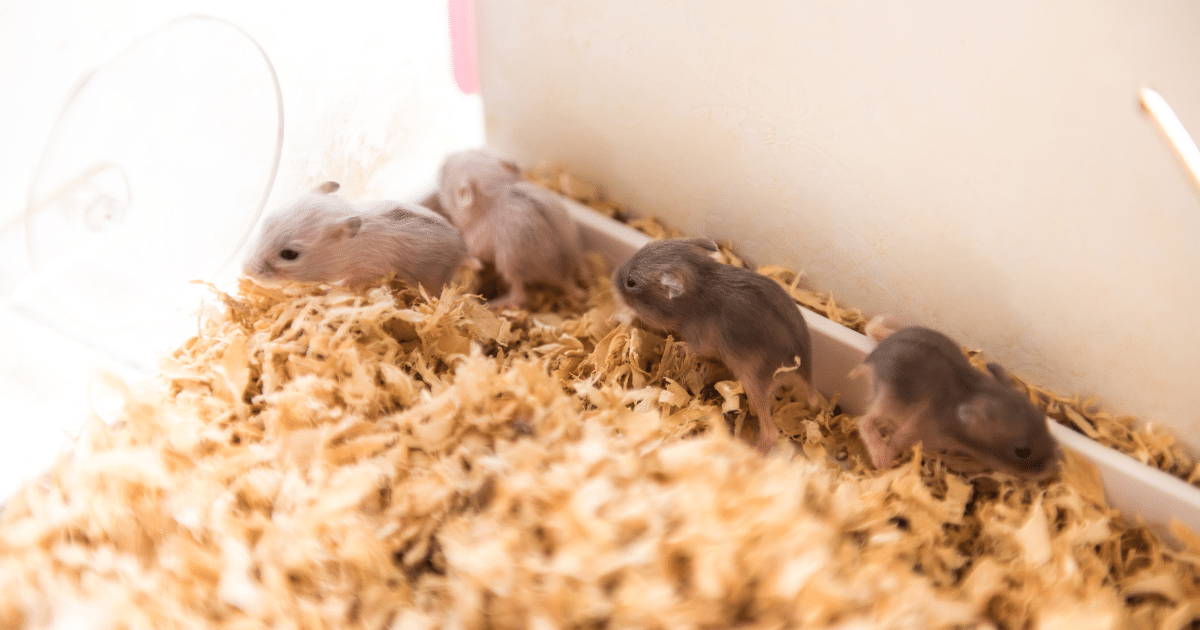
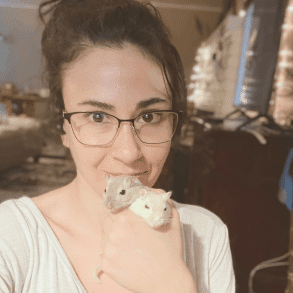

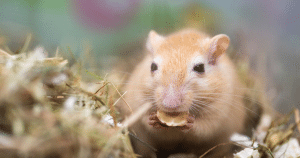
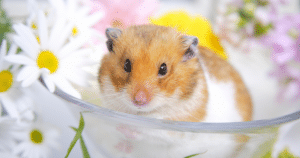
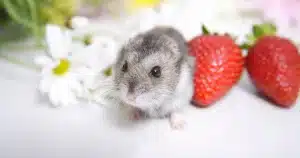
0 Comments